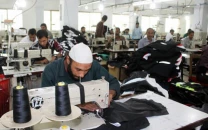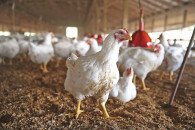The week in focus
The country achieved a new feat last week when foreign exchange reserves swelled to a record high.

The foreign currency reserves rose to $18.25 billion from a mere $3.5 billion in November 2008, when the country took $7.6 billion, later increased to $11.3 billion, in an emergency bailout from the International Monetary Fund (IMF). But it was not just loans that provided a boost to reserves, the remarkable improvement in exports to around $24 billion and record remittances of $11 billion from overseas Pakistanis also contributed a lot to improving the pool of foreign currencies.
According to an analyst, there were expectations at the start of the fiscal year 2010-11 that reserves would end up around $15 billion by the close of the year, but the $18 billion level was much better than the estimates.
However, the country will have to face challenges in the new fiscal year. Exports, which had been boosted by textile shipments due to record high cotton prices in the international market, may not keep the mark achieved last year as prices of cotton have started coming down quite rapidly. Remittances too may not continue the pace at which they increased last year. In 2010-11, remittances rose by 26 per cent.
The State Bank also said in its third quarterly (January-March) report on state of economy that the country’s external sector performance faced real risks of reversal. Remittances could not be forecast with much reliability, imports might come under pressure given the sharp increase in crude oil prices and the recovery in global demand appeared fragile which could hit Pakistan’s exports, it said.
Debt repayments
In addition to all these, debt repayments to the IMF are coming due from 2012. According to InvestCap Head of Research Khurram Schehzad, the country will have to pay around $3 billion in foreign loans and debt servicing in the current fiscal year and reserves might fall due to the debt repayments. “We need to increase our core reserves which do not include foreign loans and assistance,” he said.
Schehzad underlined the need for enhancing exports, particularly of textile products, for which the industries should be supplied gas and electricity without interruption. “Availability of electricity and gas will lead to opening of closed textile units, which have the largest share in the country’s exports,” he said.
He particularly called for enhancing trade cooperation with the European Union (EU), which bought a major part of Pakistan’s textile products every year. The EU had approved a concession package for Pakistan’s textile products late last year, but it got blocked in the World Trade Organisation (WTO) due to opposition from India.
BMA Capital Group Head of Equity Research Hamad Aslam said foreign exchange reserves were expected to fall to around $15-16 billion by the end of the current fiscal year in June 2012. He said imports might rise in double digits due to high crude oil prices hovering above $100 a barrel and exports would not remain robust because of the fall in world cotton prices. Of course, there will be debt repayments as well.
He also said the rupee would drop an estimated five per cent to around 90 to a dollar in the current year because of an estimated higher trade deficit.
In order to keep foreign currency reserves at a comfortable level, the government should also woo local and foreign investors to inject money into the economy and take austerity measures to curb its expenditures.
the writer is incharge Business desk for the Express tribune and can be contacted at ghazanfar.ali@tribune.com.pk
Published in The Express Tribune, July 11th, 2011.



















COMMENTS
Comments are moderated and generally will be posted if they are on-topic and not abusive.
For more information, please see our Comments FAQ